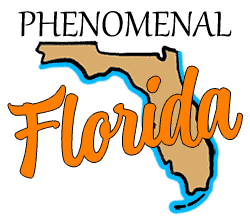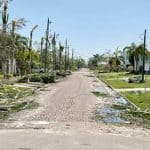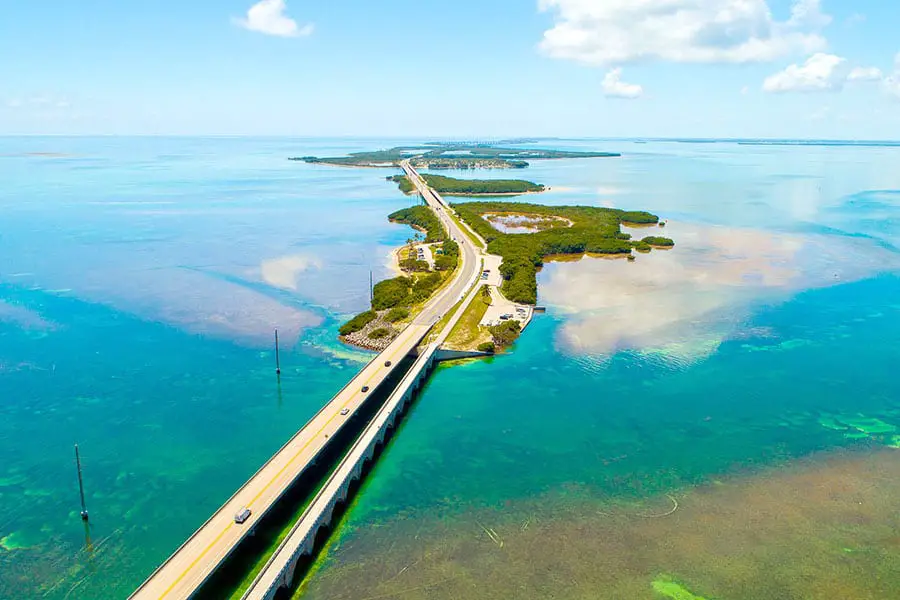
The Florida Keys are an archipelago that juts off from the southern tip of the Florida peninsula, heading roughly southwest. This archipelago is a series of islands, some big and some small, that marks the boundary between Florida’s Atlantic and Gulf coasts. So why are these islands called keys instead of islands?
All keys are islands, but not all islands are keys. A key is a special kind of island that is made from built-up coral deposits. This feature makes them different from other islands: keys are a result of biological activity from corals, where other kinds of islands have strictly geological origins.
So what does that really mean? Are keys different from islands in more noticeable ways? Does being built from coral make the islands stronger or weaker than a barrier island or a volcanic island? Read on to learn more about Florida’s islands and keys.
Florida Keys – Why Not Islands?
Florida certainly does have its share of islands. A few islands that are more commonly known are Anna Maria Island, Marco Island, Merritt Island, and Gasparilla Island. So why are these islands known as islands and not keys? And why are the keys called keys and not islands? The whole situation seems to be a bit of a mess.
The technical difference between a key and an island is in their origin. Islands originate from some form of geological or hydrological activity. In other words, islands are formed by rocks and earthen materials. Keys are created by the activity of living corals as they build a reef. National Geographic says that a key is essentially a “small, low-lying coral island.”
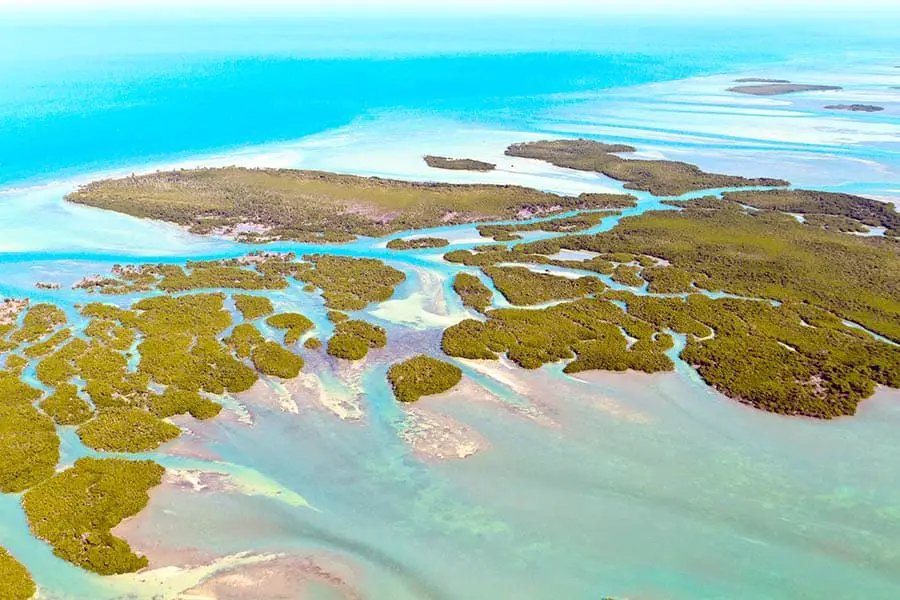
Are the Florida Keys Manmade?
This question might seem a little strange but think about it. A “small, low-lying coral island” doesn’t seem to describe the conditions on, say, Key Largo adequately. Instead, the Florida Keys feel big, substantial, even wandering at times: they don’t feel like one might expect a small coral island to feel.
The Florida Keys are not manmade. In fact, their origins take us back through time thousands of years ago. During that time, sea levels were much higher, and the area that is now the Florida Keys was a combination of coral reefs and sandbars. It sounds like it was a beautiful place even then!
However, when Earth went through its most recent ice age, the sea level dropped significantly, exposing the reefs. They eventually fossilized and, over time, became the limestone rock that makes up the keys today.
Are the Florida Keys Really Different from Florida Islands?
So we know that the keys are called that because they have a unique geological origin. But is that different from other islands in Florida? Are the other islands actually misnomers? Should Marco Island be Marco Key?
Marco Island is relatively close to the Keys; it is low-lying; it has sandy beaches. Is Marco Island actually a key? The answer is no: Marco Island is a barrier island, distinctively different from a key. I’ll spare you the painful details, but Florida’s geological features seem to be appropriately named according to my research. Florida has many keys, but it also has many islands.
Where Do the Florida Keys Start?
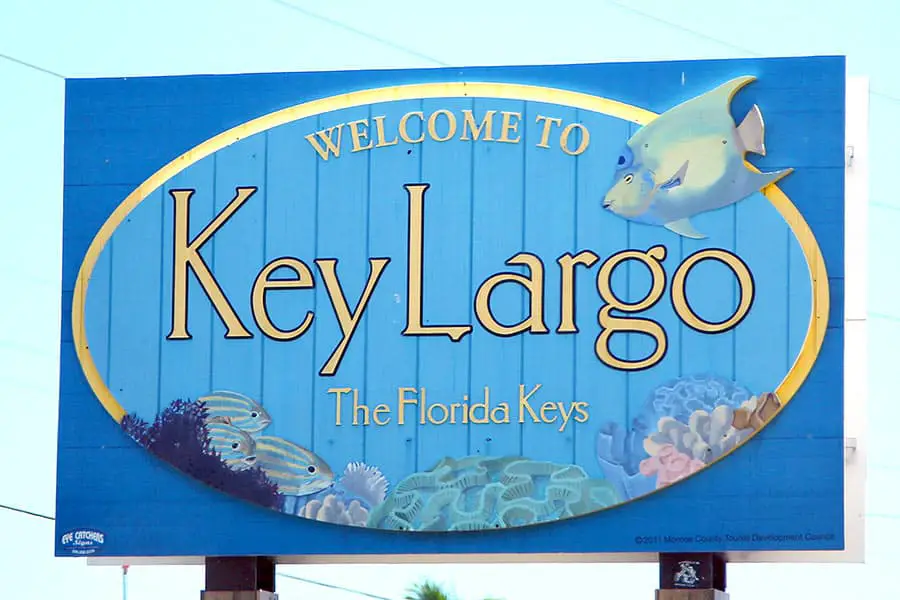
The Florida Keys are traditionally said to begin with Key Largo. So, technically, when leaving Miami on Route 1 headed into the keys, the first key you will cross is the appropriately named Cross Key. However, this key is fairly minor and uninhabited and is not a place one would visit when coming to the Florida Keys.
Key Largo is the closest key to the mainland and is the beginning of the Florida Keys. Therefore, it is the first major, inhabited key that you will come to when traveling down Route 1. It is about 30 miles south of the city of Homestead, which is one of the last significant towns on the Florida peninsula. One can expect to drive about 40 minutes from Homestead to Key Largo, and most of the drive is through the Everglades.
Phenomenal Florida Fun Fact: Key Largo is known as a great place to grow Key Limes, which are a key (haha!) ingredient in Key Lime Pie. So be sure to grab a big slice of this delectable treat when you come to the Florida Keys.
Other Posts of Interest
- Can You Surf All Year Round In Florida? +Best Places To Surf
- How Many Bridges Cross Tampa Bay?
- Is Florida Part Of The Caribbean?
- Which Is Better To Visit: Miami Or Orlando?
Is There Freshwater in the Florida Keys?
The Florida Keys are surrounded by salt water. The Straits of Florida, the Atlantic, and the Gulf of Mexico are all saltwater bodies. With the exception of the Key West freshwater lens, the groundwater in the keys is generally not potable.
The Key West freshwater lens is an aquifer that sits beneath Key West. The aquifer is filled by rainwater, and volume fluctuates between about 20 million gallons during the dry season and 30 million gallons during the wet season. Some locals have tapped the aquifer with wells, but the actual usage of this aquifer is largely unknown.
This aquifer is also not a viable source of fresh water that could sustain the population of Key West. Heavy use would rapidly deplete the freshwater, and the bottom of the aquifer contains a mix of freshwater, saltwater, and various minerals and elements. The porous limestone and surrounding saltwater also affect the viability of this aquifer as a reliable freshwater source.
There is, however, one freshwater lake in the Florida Keys. Formerly used as a limestone quarry, the Blue Hole is now a rain-fed lake that has a freshwater lens atop a lower layer of saltwater. This freshwater lens is a crucial source of fresh water for animals like the Key Deer, turtles, iguanas, alligators, snakes, and other critters. The Blue Hole also has unique aquaculture: saltwater fish live in the lower, saltier layers of the lake while freshwater fish live in the higher, fresher portions of the water.
Where Do the Florida Keys Get Their Water?
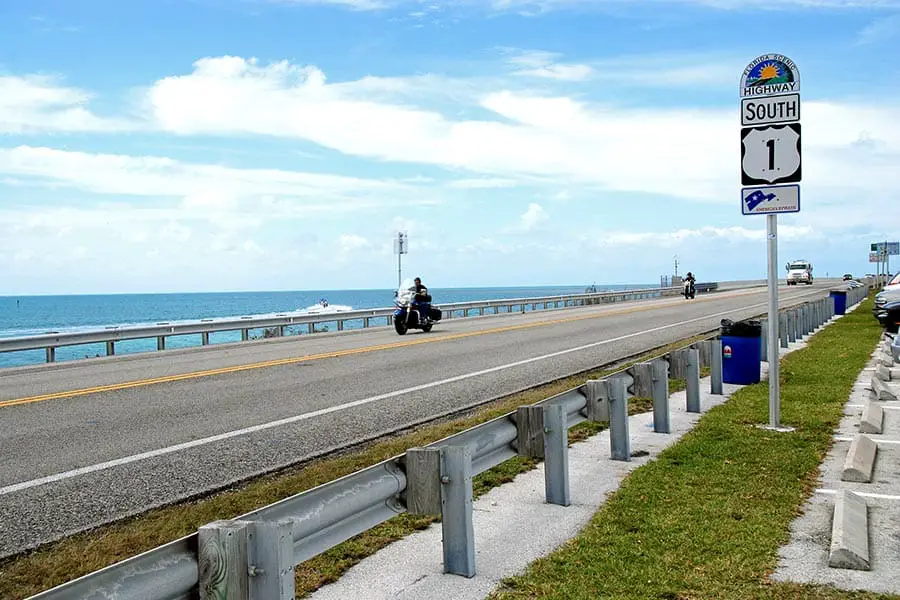
So if there’s no fresh water in the keys and the big aquifer in Key West is not really viable, where the heck do the keys get their freshwater from? Fresh water for the keys is pumped from wells near Miami, then transferred to the Keys’ water infrastructure through an aqueduct that runs along Route 1. With the exception of a few homes that have wells, all of the fresh water in the keys is pumped through this aqueduct.
So, how did people get water before the aqueduct? Weren’t native people on the keys and Floridians there during the old times? Before the land was developed, south Florida and the keys had a different environment that fed freshwater to the area. Native people dug basic artesian wells to provide some freshwater, and freshwater was also abundantly available in the Everglades before the development and canalization of South Florida, which caused significant changes to the local ecosystem.
Why Are There No Waves in the Florida Keys?
The Florida Keys are protected from the action of large waves by a large barrier reef that protects the archipelago from the heavy waves of the Atlantic Ocean. Waves break on the reefs, keeping the waters that separate the keys from the ocean relatively calm and tranquil. This separation makes the Keys great for diving, sailing, boating, fishing, and other marine activities that don’t always pair well with heavy seas.
The barrier reef off the coast of Florida extends from Biscayne Bay all the way to the Dry Tortugas, protecting the Florida Keys from heavy surf that could cause erosion or flooding. The reef is also a sanctuary for incredible marine life, making it a popular place for scuba divers.
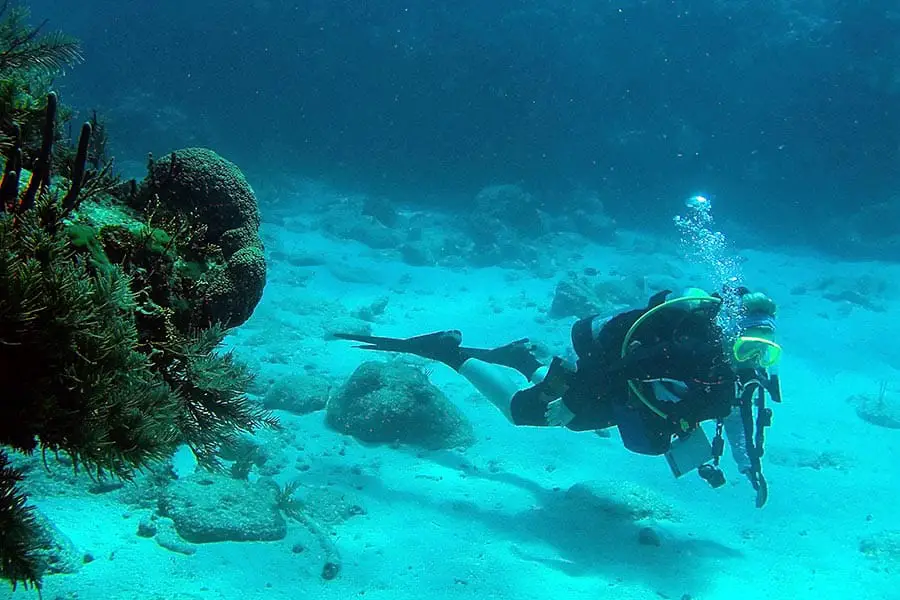
Why is the reef such a great place to dive? The reef is teeming with exciting marine life, and divers can experience the fantastic undersea world of the barrier reef firsthand. In addition to the natural coral formations found in the reef, divers can experience a number of shipwrecks that have become interesting habitats for sea creatures. Some of these wrecks were accidental, but some were deliberately sunk to create artificial reefs.
The coral reef itself is protected, and divers are asked not to touch the corals or the bottom of the seabed; however, many scuba divers find the barrier reef to be a place of sublime beauty despite these reasonable limitations. One can encounter a variety of creatures from rock lobsters to tarpon, cobia, octopus, and even sea turtles!
The Key Point: Biology, not Geology
The Florida Keys are some of the most beautiful islands in the world. Among the treasures a key-going person might encounter are tropical beaches, amazing mangroves, clear waters, great fishing, and a local culture that is uniquely roguish and fun.
And while you’re out having the time of your life in the keys, you can win a bet by remembering that the difference between an island and a key is in the origin: keys come from corals, and islands come from rocks. So a key has a biological origin that no other type of island has, and we like to think that this unique background helps color the character of these vibrant and engaging oases.
